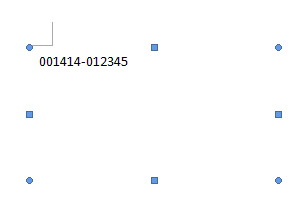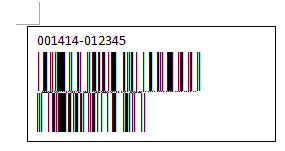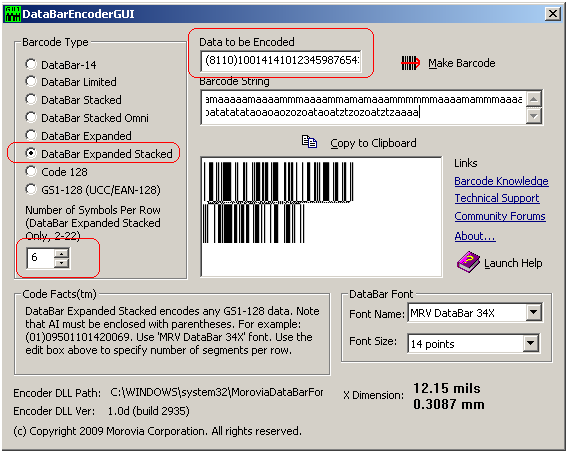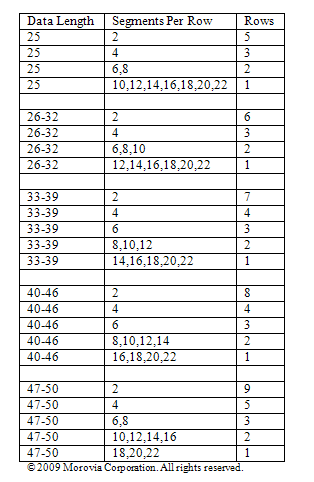GS1 has published a new coupon format to be used in North America, called DataBar Coupon. This coupon code can encode. The Application Identifier (AI) for this code is 8110, and the value can be from 25 to 39 digits long.
You can use Morovia DataBar Fontware to create such a coupon. You can create the code in drawing programs such as Adobe Illustrator, or Word Processing programs such as Microsoft Word. Adobe Illustrator users might want to read this article for a tip on adjusting line heights.
- The coupon code requires the company prefix and offer code to be printed on top of the barcode. Started with a text box and enter this information on the top.

- Open Morovia DataBar Font Encoder GUI.
- Choose DataBar Expanded Stacked in the Barcode Type box, and enter the coupon code in the Data to Be Encoded box. Note that you must include both AI and data, and AI must be enclosed with parentheses. Make sure that the Symbols Per Row is set to 6.
- Press Make Barcode button and the barcode will appear below.
- Press Copy to Clipboard to transfer the barcode into clipboard.
- In Microsoft Word, press Paste to Paste the barcode into the text box. Right click on the barcode and choose Ignore Once to disable spell checking.

- Now you created the coupon code. According to GS1, before January 2010 you should also include the UPC-A coupon symbol. After that date the UPC-A coupon is no longer necessary.
The new coupon code (AI 8110) is required to be printed in GS1 DataBar Expanded Stacked. Its data can be quite long. In fact the length is the longest we have ever seen in GS1-128 - from 25 to 39 digits. GS1 DataBar Expanded Stacked can have multiple rows, depending on the data and the value of SegmentPerRow. The value of SegmentsPerRow can be anywhere between 2 and 22. 22 also produces one-row barcode.
In some cases, it is desirable to find out the range of SegmentPerRow, based on the data encoded and the number of rows desired. For example, our coupon codes can be between 25 to 39 digits, but we want all barcodes created two rows.
To find out the relationship among the data length, segment per row and the number of rows in the barcode created, we wrote a simple perl program. It calls the encoder DLL included in Morovia DataBar Fontware to get the barcode string, then parses the string to find out how many rows in the result. It generates randomized data as input (based on DataBar Spec, it is not necessary as numeric data with the same length should always create the same length barcodes, all things being equal). It increases the number of digits one by one, and calculates using all possible SegmentsperRow values. Warning: if you are running the trial version, do not run this program - you will have to press OK button hundreds of times to complete the program (each call pops up a ‘trial notice’ message box).
We found that the results can be divided into five groups - 25 digits, 26-32, 33-39, 40-46 and 47-49. It seems that each segment encodes 6 digits. Note - the digits we talked here refer to the coupon code, not including the AI portion.



